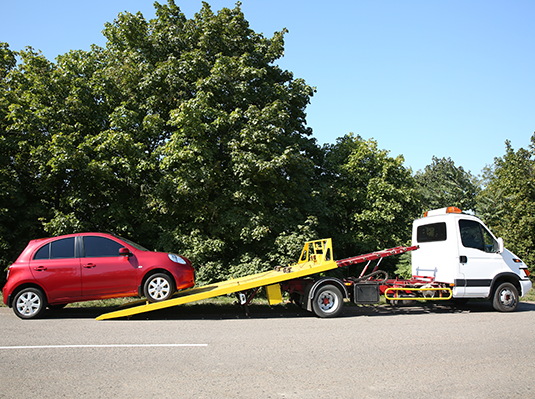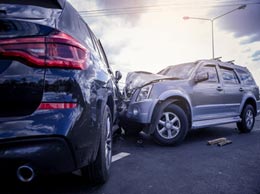
Most states require that you carry auto insurance by law. However, even if it weren’t required, everyone should carry auto insurance! But why is it so important? What is car insurance in general? What does is cover? How much coverage should I have? Where should I look for car insurance? We will investigate each of these questions and break down auto insurance step-by-step. By the end of this article, you will be equipped with knowledge that will give you more confidence when looking at your auto insurance policy. Let’s get started!
What is car insurance?
Car insurance is used for a handful of situations. It is a contractual agreement that will cover you up to an agreed upon limit in coverage. It can cover damage caused to you or your vehicle and will also cover you if you are ever found liable for someone else’s injuries or damages. It can cover the medical bills of those that are in the vehicle with you in the event of an accident. It can also cover you and your vehicle if you are hit by another driver who does not have car insurance at all, or if their insurance is simply not sufficient enough to cover your injuries or property damage. Long story short, you will be glad you have it when you need it. Let’s break the coverages down line-by-line.
What does car insurance cover?
Car insurance covers a multitude of things. To keep it straightforward, car insurance can cover your car, you, your passengers, other people, and their property. Let’s take a dive in and detail each!
Car Insurance Covers Your Vehicle
Comprehensive Coverage – Sometimes called “Other Than Collision Coverage”; this will cover your vehicle for damage caused from events that are outside of your control and are not collision related. Some common examples of a comprehensive loss are vandalism, fire, and falling objects.
Example: Let’s say a hailstorm rolls through and when you look outside, you see golf ball sized hail pelting your car. You go outside to assess the damage and see dents scattered across your hood and the top of your car. After taking it to a shop, you find out it will be around $2,500 to repair the hail damage ($2,500 is the average it will cost to repair hail damage to a vehicle). In this case you would simply pay your comprehensive deductible (Usually around $250-$1,000 depending on what you select) and your insurance provider would cover the remaining amount.
Collision Coverage – This coverage will cover your vehicle if you collide with another vehicle or even another object such as a tree or fence.
Example: Let’s say you are driving down the highway, your tire pops, and you lose control of your vehicle, hitting the guardrail. That would be a situation where you could repair the damage done to your vehicle by simply paying your collision deductible (usually ranges from $250-$1,000).
Car Insurance Covers You and Your Passengers
Your car insurance will be able to cover you and your passengers in the event of an accident through Uninsured/Underinsured Motorist Coverage and Medical Payments coverage.
Uninsured/Underinsured Motorist Coverage – This coverage will cover you in the event you are hit by someone who does not have enough coverage to cover your medical bills (i.e., has state minimum limits) or property damage, or if that person simply does not have car insurance at all. On the property damage side, this can oftentimes cover your vehicle in the event of a hit-and-run situation.
Medical Payments – This coverage is optional in many states but one that I suggest for everyone. It will cover the medical bills for you and anyone in the car with you in an accident, regardless of fault. Make sure to talk to your agent about this coverage, or Personal Injury Protection (if offered in your state). Unfortunately, I have seen many clients in the past without this coverage on their policy because they either did not know about it, or it simply was not offered.
Auto Insurance Liability Coverage
Liability Coverage - Liability coverage is the main reason we have car insurance. Causing an accident has the ability to be a life-altering event that could reshape your financial future. Liability coverage will cover you if you are found at-fault in an accident. Auto liability coverage is used to cover many expenses such as injuries sustained by the other driver and their passengers, resulting legal fees and settlements, loss of wages, and damage to the other driver’s vehicle. Needless to say, these amounts can add up very quickly. That is why it is so important to carry high liability limits when it comes to car insurance. If you have low limits, it is very easy to exhaust your coverage quickly. Once your limits are exhausted, you would have to cover the expenses out of pocket. If you can’t cover the extra expense, there’s a possibility that your wages could be garnished, or you could be forced to sell your home or other assets you own in order to pay the settlement. This is what I mean by “life-altering”, and that is why I highly suggest carrying high liability limits. I would also highly recommend talking with your agent about an Umbrella Policy as well.
What are the liability limits on my auto insurance policy?
Your insurance limits are the maximum amount of money the insurance company will pay when a covered incident takes place, such as a fender-bender or injury to someone. With auto insurance, those limits are often listed as a split limit, and represent how much money will be paid if you cause damage to others on the roadway. Let me demonstrate:
The state minimum liability limits in Texas are 30/60/25 - that breaks down to:
- $30,000 bodily injury coverage per person
- $60,000 bodily injury coverage per accident
- $25,000 of coverage for property damage
Let’s pretend you’re carrying Texas state minimum limits. You get into an accident, you’re found to be at fault, and you total an $80,000 Mercedes, and injure three people, each with $45,000 of medical bills.
Your policy would pay $30,000 for each person, and would max out at $60,000. The three people’s medical bills totaled $135,000. You would be left paying $75,000 out of pocket due to your low bodily injury liability limits. You also only had $25,000 in coverage for property damage, which means you’re on the line for $80,000 - $25,000, or $55,000 to cover the Mercedes. In total, you’re on the line for $130,000.
On the contrary, higher limits of 250/500/100 would cover:
- $250,000 per person
- $500,000 per accident
- $100,000 of property damage
In our same example, all medical bills would be covered as none of the injuries exceed $250,000, and the total bill is under $500,000 so no cap is reached. The Mercedes also would be fully paid for under this more comprehensive policy.
The insurance premium difference between the more basic policy and the much better policy may sometimes be only a few dollars a month, so be sure to ask your agent to look at higher limits to make sure you’re not put in a situation that drastically alters your financial wellbeing.
Am I required to carry car insurance?
All but two states require car insurance. In Virginia and New Hampshire, car insurance is not mandatory. In Virginia, you must pay a $500 yearly fee in order to opt out and waive your requirement of car insurance. This fee does not act as car insurance. You will still be liable for any damage caused if you are ever involved in an accident. This simply waives your requirement to have insurance. In New Hampshire, you also have the option to opt out of carrying car insurance. However, it needs to be emphasized that in both of these states, if you are in an accident, you will be responsible for covering the damages. As you can imagine, this is an extremely high risk to run.
What should I look for when buying auto insurance?
When you are going through the process of buying insurance, there are a few things to lookout for. However, the main piece of advice I would give is to make sure you understand each coverage and what it’s covering for you. I cannot emphasize this enough! I have had so many clients in the past that had state minimum limits (30/60/25 liability limits in Texas) because they simply had no idea what that meant and how important it is to raise those coverages. In the past, they had gotten a quote sent to them, saw it was the cheapest, and went with it. Once they made their way to me, most of the time they were upset that they had no idea they had been putting themselves at such risk. Take the time to go through the coverages with your agent line-by-line so you can make the best possible decision for your situation. I have heard some horror stories from people getting in accidents who do not carry high limits because they simply do not know any better. They get in an accident, their insurance only pays out a small portion, and they are responsible for covering the rest. Again, life-altering situations. I have also seen the happier ending stores. A person changes from having state minimum limits to have the highest limits offered with an umbrella to top it all off. That person gets in an accident and the accident is fully covered. Very different endings to the story.
So, make sure you take the time to go through the coverages. Reach out to an insurance professional to go through the policy with you, and have an open mind. Remember, insurance is there for the things you can not afford on your own. Do not settle for an auto policy just because it is “cheap”. Make sure you consider the quality of coverage because if that day comes, you want to make sure that you and your family are properly protected.
Where can I get a free auto insurance quote online?
Most insurance quotes are free. If you’re doing most of your shopping online, I would highly recommend speaking to an agent before finalizing the policy in order to discuss your coverages and make informed decisions. I would caution against using too many online comparison tools, as some of them will sell your data or provide inaccurate rates. You can get a free auto insurance quote online in Goosehead’s [tool] which integrates with over 140 different carriers to provide you quick, accurate quotes, and we will never sell your information. You’ll also have the option to call an agent as soon as your quotes are returned to talk through the coverages with them.
What is a good company for auto insurance?
There are many great companies when it comes to auto insurance. There can also be some not-so-great companies. Make sure you are doing your research. I am all about paying less for car insurance, but you want to make sure you are with a company that will take care of you when it’s crunch time. Demotech and AM Best are both companies that rate the financial stability of insurance companies. “A” ratings from these providers are typically good indicators. Another thing to consider is to make sure to check different options. If you are shopping with an independent broker like Goosehead that has many options, great! If not, I highly recommend looking into an independent broker to see as many options as possible. Do not limit yourself. Lastly, ask around. Ask your friends how their service experience has been. A great benchmark for a good insurance company is how well they take care of their clients when they need them.
Note: Goosehead shops with over 140 insurance providers to find you a policy with the best rate available for the best coverage. Our team vets all of our partners thoroughly to ensure a track record of financial stability. Get a quote below.


